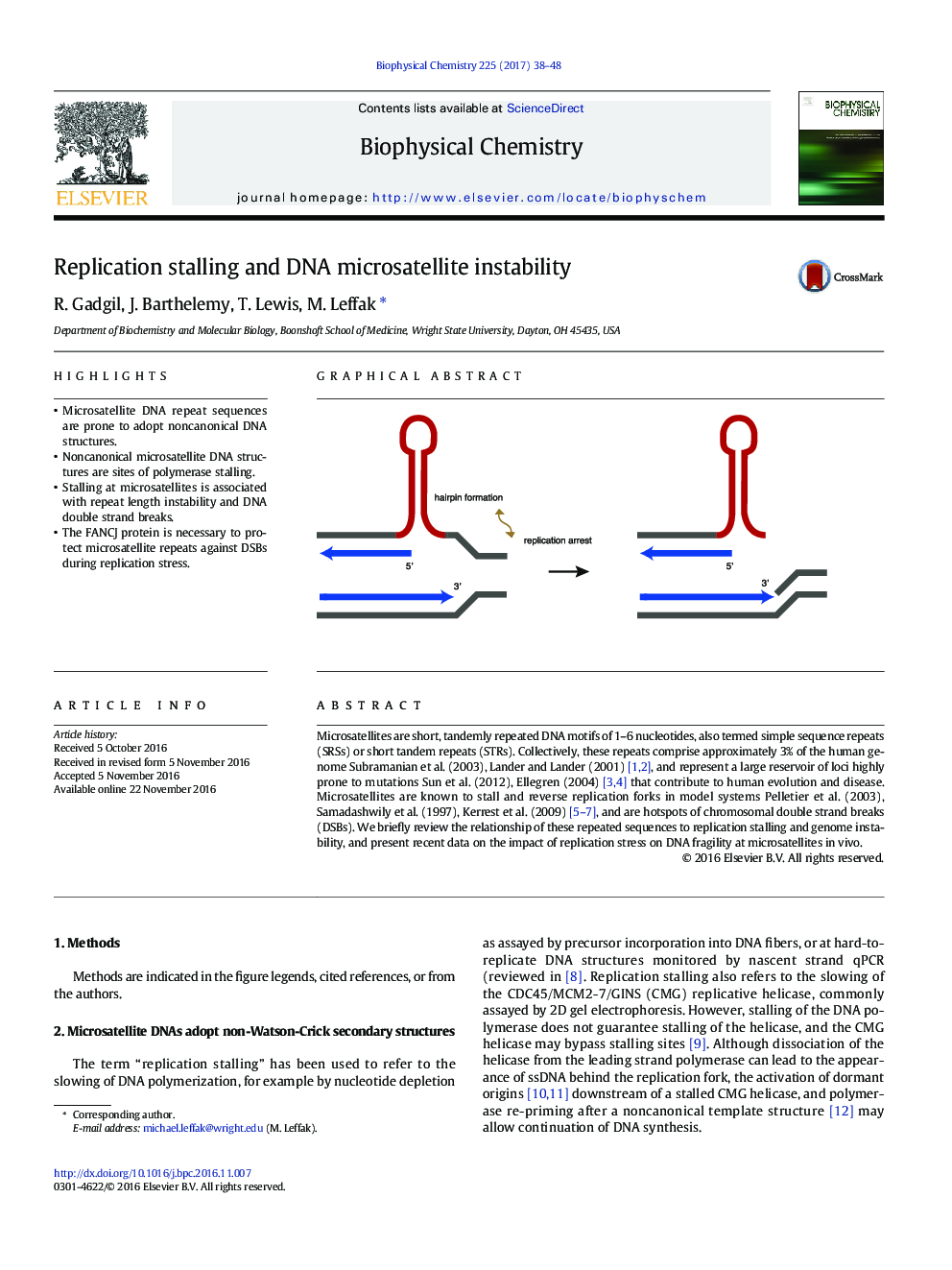| Article ID | Journal | Published Year | Pages | File Type |
|---|---|---|---|---|
| 5370665 | Biophysical Chemistry | 2017 | 11 Pages |
â¢Microsatellite DNA repeat sequences are prone to adopt noncanonical DNA structures.â¢Noncanonical microsatellite DNA structures are sites of polymerase stalling.â¢Stalling at microsatellites is associated with repeat length instability and DNA double strand breaks.â¢The FANCJ protein is necessary to protect microsatellite repeats against DSBs during replication stress.
Microsatellites are short, tandemly repeated DNA motifs of 1-6 nucleotides, also termed simple sequence repeats (SRSs) or short tandem repeats (STRs). Collectively, these repeats comprise approximately 3% of the human genome Subramanian et al. (2003), Lander and Lander (2001) [1,2], and represent a large reservoir of loci highly prone to mutations Sun et al. (2012), Ellegren (2004) [3,4] that contribute to human evolution and disease. Microsatellites are known to stall and reverse replication forks in model systems Pelletier et al. (2003), Samadashwily et al. (1997), Kerrest et al. (2009) [5-7], and are hotspots of chromosomal double strand breaks (DSBs). We briefly review the relationship of these repeated sequences to replication stalling and genome instability, and present recent data on the impact of replication stress on DNA fragility at microsatellites in vivo.
Graphical abstractDownload high-res image (124KB)Download full-size image
